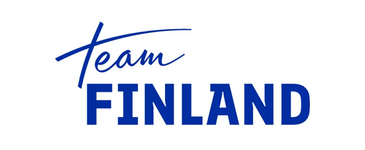Example of industrial landfill containment structures, landfills for non-hazardous and hazardous waste
This example describes the industrial waste landfill of a company operating in the area of the Centre for Economic Development, Transport and the Environment for Southwest Finland.
The site preparation of the area was completed in November 2008, after which disposal was started. Currently, the area to be closed at the final height is 2.05 ha. The landfill is divided into two sections, with one section for disposal of non-hazardous and the other for hazardous industrial waste. The sections are isolated from each other by dense and overlapping structures. Landfill caps that meet the requirements for waste landfill quality will be built on top of both landfills. The plant has new separate landfills for non-hazardous and hazardous waste, and no new two-section landfills are planned. The sectioned structure has caused challenges in keeping the leachate from the different sections separated and in overlapping and joining the structures, for instance. Despite the challenges, the caps can be made in accordance with legislation and permit regulations, and the example shows the materials and thicknesses of the layers.
The filling area has been built in stages to minimise the open area. The construction of the caps for the landfill section that will now be closed was started in 2021 by shaping and compacting the waste as well as building a primary layer in the areas where it was missing. Structures in a closed area have been reopened sufficiently to overlap or join new structures. The hazardous waste section has a thinner cap with a bentonite mat as the mineral sealing layer and a drainage mat as the drainage layer. In this way, the layer can be built in a uniform manner and within a faster timescale. A gas collection layer and a collection pipeline will be built for the non-hazardous waste section but not for the hazardous waste section. The structural layers of both landfills utilise waste materials whose properties meet the criteria for the relevant landfill and the layer in question.
Landfill layers from top to bottom:
- Surface layer ≤ 1 m
- built with two layers: lower 0.3 m + upper 0.7 m
- 0.3 m of materials such as contaminated soils suitable for landfill that are classified as non-hazardous waste
- 0.7 m of materials such as humus-rich soils and ready-mixed compost
- Drainage layer
- landfill for non-hazardous waste: 0.3 m of materials such as aggregate or crushed concrete
- hazardous waste landfill: drainage mat
- Artificial insulation
- landfill for non-hazardous waste: not constructed
- hazardous waste landfill: LLDPE membrane 1.5 mm
- Sealing layer
- landfill for non-hazardous waste: 0.5 m of materials such as foundry sand, clay or other suitable material in accordance with the environmental permit, the water permeability of which complies with the permit
- hazardous waste landfill: a bentonite mat that meets the permit’s water permeability limit
- Gas collection layer
- landfill for non-hazardous waste: 0.3 m of recovery materials according to the relevant landfill category, such as crushed concrete, slag, bed sand, bottom ash, gritting aggregate
- hazardous waste landfill, not constructed
- Primary and shaping layer of 0.3 m with sealable recoverable materials that meet the requirements of the relevant landfill category






